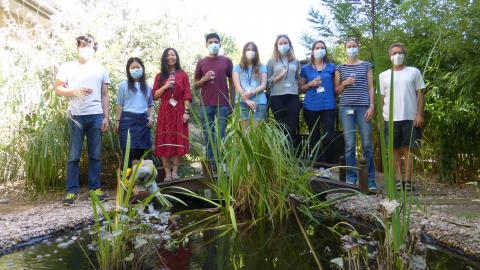Background

Overview
The immune system functions to control and eliminate infectious agents and certain cancers, and to restore physiological homeostasis and repair damage. Combatting infectious agents and cancer can be achieved by harnessing the immune response to respond to these threats via vaccination. However, whilst vaccination against many pathogens has been relatively straightforward, others have been more difficult, such as the human immunodeficiency virus type-1 (HIV-1). Similarly, effective cancer vaccine approaches remain to be realised. Once the host has resolved an infection, the immune system has to repair tissue damage and restore homeostasis. Understanding mechanisms by which dying and dead cells are removed from the host by phagocytes is central to maintaining tissue health and avoiding inflammation. Our research projects therefore focus on: i) novel approaches to vaccine design; ii) interrogating the mechanisms underlying dying cell recognition and removal by phagocytes.
i) Our SARS-CoV-2 and HIV-1 antibody-based vaccine projects are designed to elicit neutralizing antibodies by exploring new approaches, in particular focussing on attacking the glycans (sugars) that are prevalent on the SARS-CoV-2 and HIV-1 envelope glycoproteins, and that are generally associated with conserved protein surfaces. We are using chemical cross-linking and semi-synthetic glycoprotein assembly to stabilise, enhance and focus the immunogenicity of experimental vaccine antigens. These approaches are based on enhancing glycan immunogenicity and also being applied to the concept of cancer vaccine design. An additional related interest is how the post-translational addition of reactive adducts to proteins triggers B cell responses in the absence of exogenous adjuvants.
ii) Removal of dead and dying cells by phagocytes, a process termed 'efferocytosis', serves multiple functions in the host including promoting normal development, maintaining tissue homeostasis and controlling pathogen infections. Efferocytosis is carried out mainly by macrophages, which are equipped to rapidly detect, capture, engulf, degrade and recycle dead and dying cells. Efferocytosis of apoptotic cells leads to the induction of an anti-inflammatory macrophage phenotype, whereas cells undergoing inflammatory forms of cell death such as pyroptosis leads to an inflammatory macrophage phenotype. The recognition of dying cells by macrophages is regulated by a balance of so-called 'eat-me' and don't eat-me' signals. We have identified a new family of don't eat-me molecules that are removed during apoptosis, leading to efficient efferocytosis. These data have implications for understanding regulation of efferocytosis and outcomes relevant to infection resolution and inflammatory disease when the system is dysregulated.
We are in the Sir William Dunn School of Pathology, Division of Medical Sciences, University of Oxford.